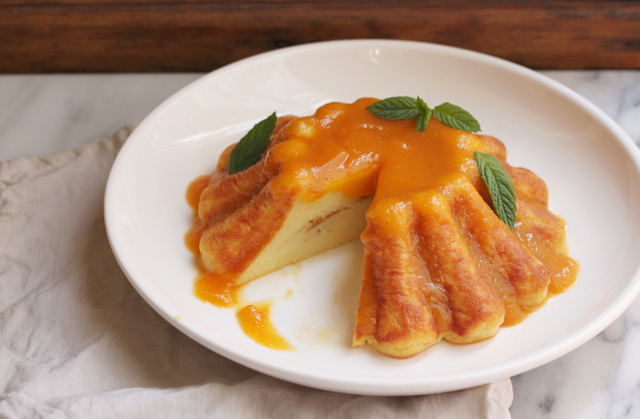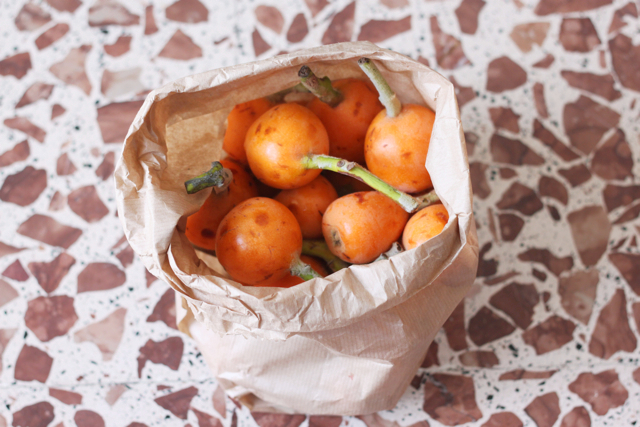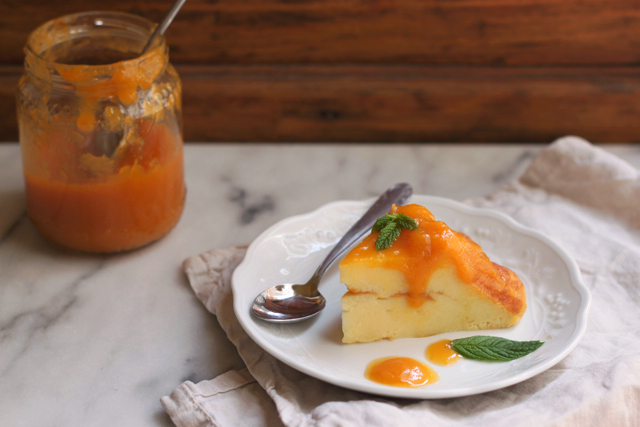It’s hard to believe that two years ago, a few bloggers interested in promoting real Italian culture though food, began a little series called Italian Table Talk. Two years! Once a month, and now, more recently, bimonthly, we “get together”, throw around ideas and come out with a theme, a topic or an ingredient that showcases an aspect of Italian food culture. I’m honoured to be the only non-Italian in this group, together with such busy, talented ladies as Juls’ Kitchen‘s Giulia, Labna’s Jasmine and My Life Love Food‘s Valeria.

Since it’s an anniversary, we like to celebrate with something sweet, like we did for our first anniversary, but this time with the theme of dolci al cucchiaio.
Dolci al cucchiaio – it’s such a charming phrase, roughly literally meaning “spoon desserts”, it’s something we really don’t have the exact equivalent of in English, but essentially it refers to sweets that you would eat with a spoon, a category which includes wobbly puddings, ice cream cakes and the like. Giulia goes for a chocolate pudding, Valeria prepares a Venetian crema with almonds and Jasmine does latte alla portoghese, a creme caramel-like pudding.
Pellegrino Artusi includes an entire chapter of them in his 1891 opus, Science in the Kitchen and the Art of Eating Well and it is so telling of his era, I think, that these puddings have their own chapter. I thumbed through the entire chapter several times, reading and re-reading pudding recipes before deciding on this very retro semolina pudding, all the while contemplating how these days I think it’s less likely to find many households that even own a pudding mould.

There are so many recipes out there for this beloved, old fashioned Italian pudding and there are a number of different ways to go about making this but I followed Artusi’s instructions for this budino di semolino e conserve, semolina pudding with jam. Retro though it may be, it is a dessert that will still appeal to modern tastes. It’s a little reminiscent of bread and butter pudding in texture and you can adapt it to use your favourite jam or compote, as you please. I think it would also be lovely with a dark chocolate sauce in place of the compote or jam.
While Artusi suggests raspberry or quince jam, I’ve paired this pudding with a loquat coulis (for want of a better word, it’s simply stewed and pureed fruit, sweetened just a little, not quite a jam). Though they may be a bit difficult for some to track down, loquats make their appearance in spring all over markets or neighbourhood trees in Italy. Loquats, round and a little reminiscent of apricots were it not for their shiny skin, are delicious eaten raw (perhaps with a dollop of ricotta and a dribble of honey), or can be turned into jam or chutney. They remind me, strangely, of melons or persimmons but are a little more tart and really quite delicate.
Apricots or apricot jam, though sweeter, could be a good substitute if you can’t get a hold of loquats.


Semolina and loquat pudding
If you want to follow Artusi’s instructions properly and do this with jam, he recommends raspberry and quince as the best jams to serve this with, with apricot, currant or peach his second choices.
Serves 6
For loquat coulis:
- 500 grams of loquats
- 50 grams of sugar
- juice of 1 lemon
- A few fresh mint leaves, optional
Artusi’s semolina pudding:
- 500 ml milk
- 130 grams of semolina
- 70 grams of sugar
- 1 knob of butter, plus extra for greasing
- 2 eggs
- pinch of salt
- zest of 1 lemon
- 2-3 tablespoons of loquat compote, plus more for the top
For the loquats:
Halve and peel about half a kilo of loquats, removing the stones, stems and skins. Cook, covered in water, for about 20 minutes. They stubbornly hold their shape very well so may not look cooked but just taste them – they mellow considerably. Drain the loquats, add the sugar and puree it. Set aside 2-3 tablespoons to go inside the pudding and about ½ cup to go over the top.
For the pudding:
Cook the semolina in the milk over a low-medium heat, stirring frequently with a whisk, for about 10 minutes or until the mixture is thick and creamy. Before taking off the heat, add the sugar, butter, salt and lemon zest and combine.
Off the heat, while the mixture is still hot, whisk in the eggs, one by one. Let the mixture cool.
Grease a pudding mould with melted butter. Pour about a third of the semolina mixture into the mould, then dot with about a third of the jam, being careful to keep the jam well away from the sides of the mould (the jam will burn on the sides of the mould). Carefully pour another third of semolina over the top and then dot with the rest of the jam. Cover with the rest of the semolina.
Bake in a moderate oven (180ºC) for about 45 minutes or until a little golden and cooked through (the centre of the pudding should bounce back when touched). Artusi suggests to serve it hot but it’s also lovely cold.
When ready to serve, warm the loquat puree in a small saucepan; add the lemon juice, vin santo and a splash of water (or as needed if it’s too thick). Pour the warm coulis over the top of the pudding, scatter some mint leaves and serve in thick slices.


 English
English  中文
中文